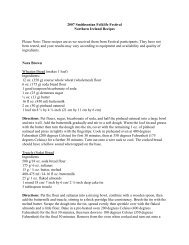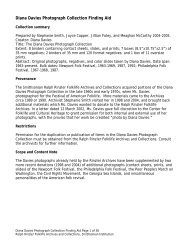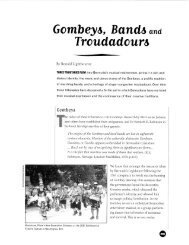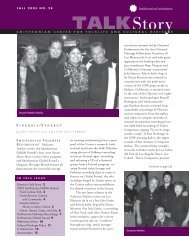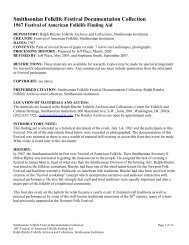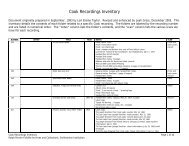Who Owns Traditional Medical Knowledge? - Smithsonian Center ...
Who Owns Traditional Medical Knowledge? - Smithsonian Center ...
Who Owns Traditional Medical Knowledge? - Smithsonian Center ...
Create successful ePaper yourself
Turn your PDF publications into a flip-book with our unique Google optimized e-Paper software.
168 SITA REDDY<br />
authors have noted, the increasing redefinition of medical heritage as information<br />
also magnifies the role of intellectual property rights (IPRs) in cultural disputes,<br />
given that the rise of the Information Age has moved the flash point debates in<br />
property from land to information. 32 Within intellectual property, a new public<br />
domain movement even seeks to protect a commons of information against the<br />
encroachment of private property. 33 At a time when ownership over medical information<br />
is more commercially valuable than how it is practiced or how it travels,<br />
it is not surprising that intellectual property in TMK, and in particular biological<br />
patents, have become sources of great wealth and profit.<br />
This is where it becomes necessary to historicize the role of the biological commons<br />
and the 1994 Agreement on Trade Related Aspects of Intellectual Property<br />
Rights (TRIPS), both of which are critical in global disputes over TMK. In medicine<br />
and biotechnology the reliance on the biological commons—which includes<br />
medical, natural, and genetic resources—as a resource to be prospected for its commercial<br />
potential or as a building block for intellectual property is so routine that<br />
it goes by its own name: bioprospecting. 34 And it is here that the 1994 TRIPS<br />
changed everything. As legal scholars Anupam Chander and Madhavi Sunder argue,<br />
TRIPS transformed the global biological commons by propertizing the information<br />
resources of the West but leaving in the commons the information resources<br />
of the Rest, such as genetic resources and traditional knowledge.<br />
Native peoples once stood for the commons . . . But in the advent of<br />
an awareness of the valuable genetic and knowledge resources within<br />
native communities and lesser developed nations, the advocates for the<br />
public domain—and, in turn, propertization—have flipped. Now, corporations<br />
declare the trees and the shaman’s lore to be the public domain,<br />
while indigenous peoples demand property rights in these<br />
resources. 35<br />
This increasing propertization of TMK provides precisely the larger context for a<br />
detailed examination of the three Ayurvedic heritage schemes with which the paper<br />
began.<br />
WHOSE KNOWLEDGE TEXTS, GARDENS, AND TAXONOMIES<br />
My first case, the translation of the famous herbal Hortus Malabaricus, reads almost<br />
like a parable about biopiracy. The story begins in the late seventeenth century, when<br />
Hendrik Adriaan van Rheede, the Dutch commander of Malabar in the service of<br />
the Dutch East India Company (VOC) at the time, compiled and published this<br />
monumental illustrated botanical text. Begun in 1673 and taking more than a decade<br />
to complete, this 12-volume masterpiece marked a climax in late seventeenthcentury<br />
botanical literature as the first definitive history and survey of tropical botany<br />
in South Asia. The exquisitely illustrated volumes included wide-ranging information<br />
on the medicinal uses of 740 plants, valuable not only because of its



